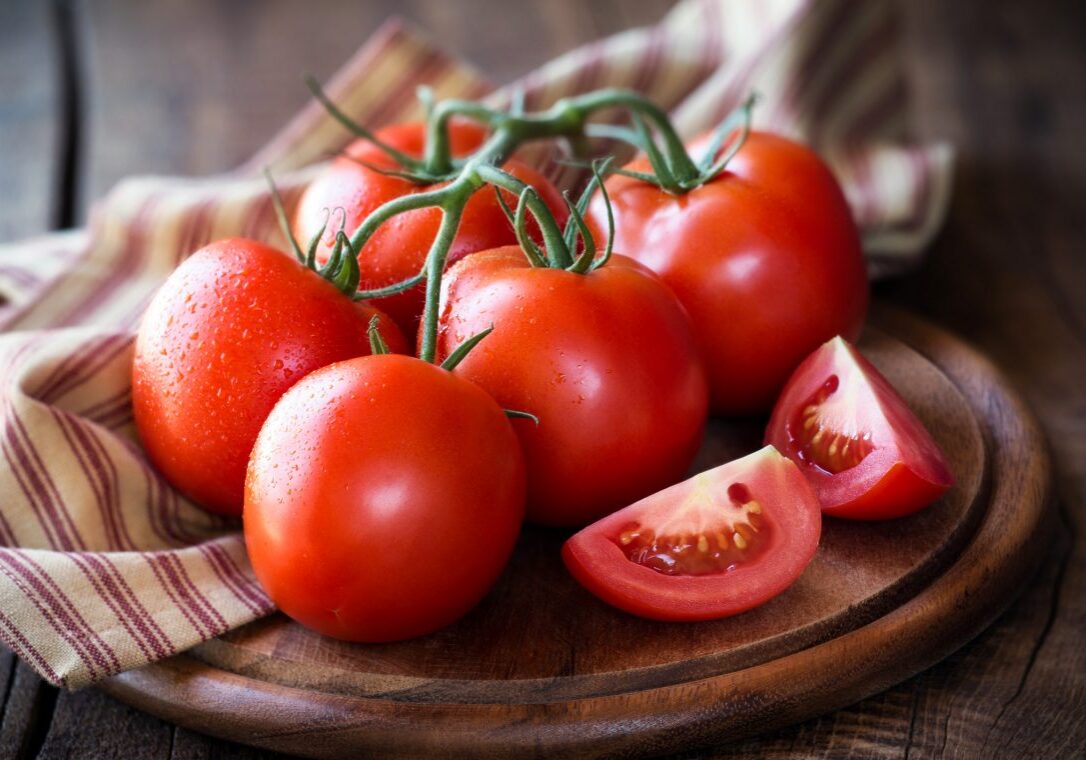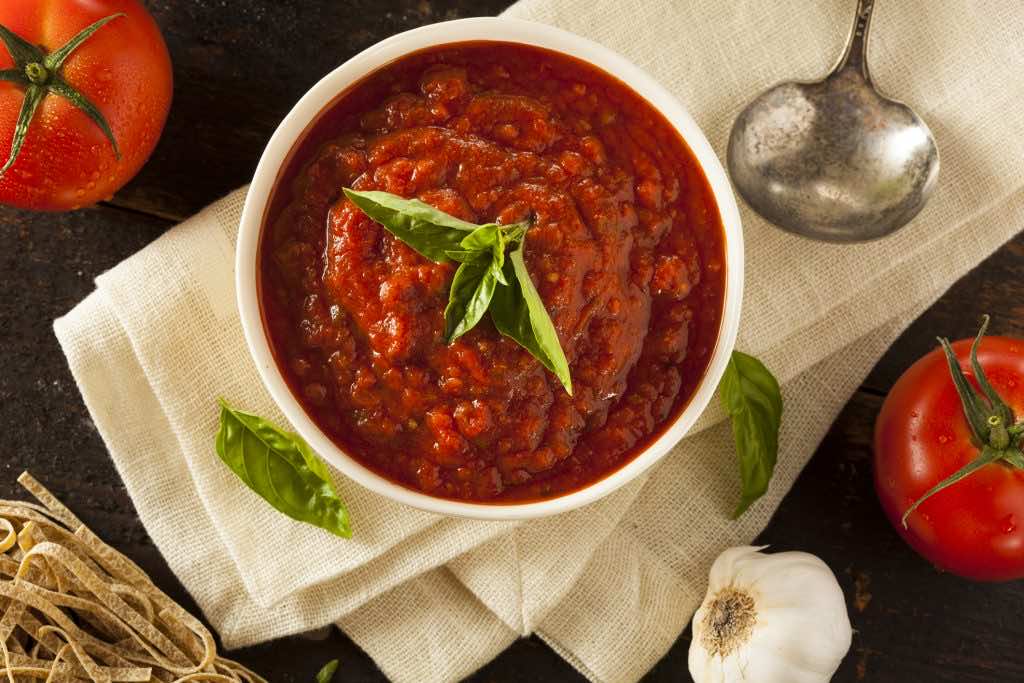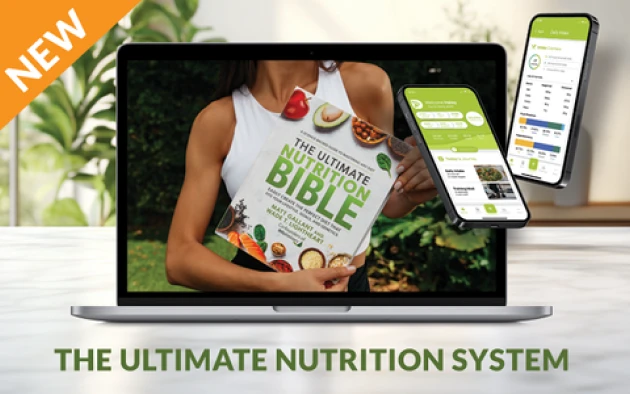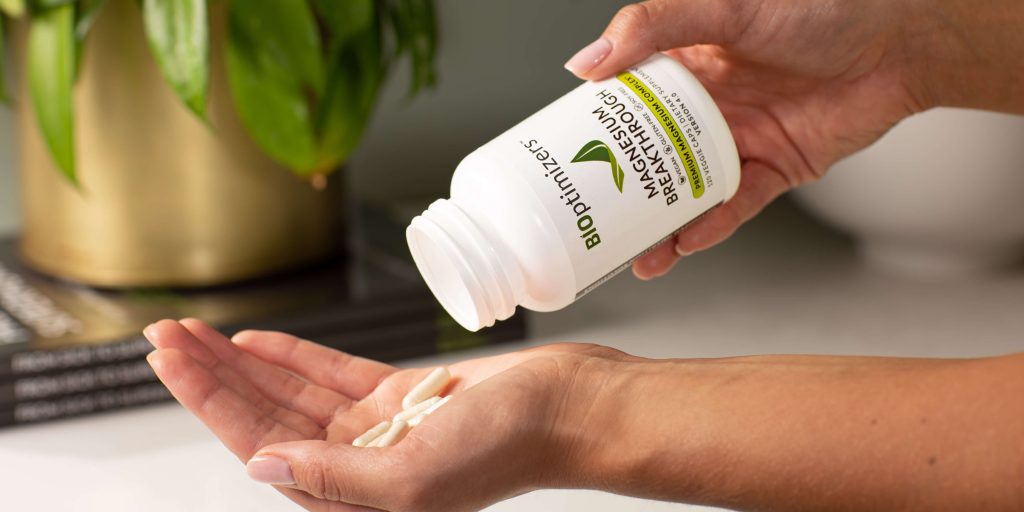Why You Should Get Tomatoes In Your Diet Plan
There are many foods we should be eating on a regular basis. Most of us realize this but few of us act on it. You can do all the research in the world about what’s healthy and what’s not. But at the end of the day, if you aren’t actually preparing meals with healthy foods…

There are many foods we should be eating on a regular basis. Most of us realize this but few of us act on it. You can do all the research in the world about what’s healthy and what’s not. But at the end of the day, if you aren’t actually preparing meals with healthy foods and eating a wide variety to ensure nutrient diversity, you aren’t winning the game of health promotion.
One such food that deserves a regular spot in your diet plan is the tomato. Sadly, the greatest consumption of tomatoes typically comes in the form of ketchup in the western diet, which is not ideal at all. If you take a look at the label of ketchup, it’s plain to see why: sugar.
Ketchup is more sugar than it is tomatoes, so you could actually be doing yourself a disservice if you have too much.
Fresh, ripe, raw tomatoes are what’s best. There are many different ways to prepare tomatoes so you definitely can serve them cooked if you prefer, but you want to keep them in their natural state as much as possible.
This all said, let’s first go over the nutrition stats of the tomato and then talk about the health benefits they have to offer. Then we’ll finish up with some serving suggestions so you can ensure that you aren’t leaving this food out of your diet any longer.
The Nutrition Stats Of The Tomato

First, let’s talk about nutrition stats. There are different types of tomatoes available on the market today and each type is going to have a different nutritional profile. However, they don’t differ that much that we can’t get a general sense of what you’ll be taking in.
Per one medium, red, ripe tomato that’s just over 100 grams, you’ll be getting around:
· 22.1 calories
· 4.8 grams of carbohydrates
· 1.1 grams of protein
· 0.2 grams of fat
· 1.5 grams of fiber
· 26% of your vitamin C intake
· 20% of your vitamin A intake
· 12% of your vitamin K intake
· 8% of your potassium intake
· 7% of your manganese intake
· 5% of your vitamin B6 intake
· 5% of your folate intake
Also included in the list of micronutrients found in the tomato (but in smaller concentrations) includes vitamin E, niacin, pantothenic acid, choline, betaine, calcium, iron, manganese, phosphorus, zinc, as well as copper.
Tomatoes are also a wonderful source of antioxidants, which shouldn’t go overlooked. Because eating antioxidant-rich foods is one of the top ways to promote a strong and healthy body. They help to combat free radical damage because when it builds up, it can lead to accelerated aging amongst other things (more details to come).
So now that you know a little more about the actual nutrients found in the tomato, let’s go over the health benefits it’s going to present to you.
Reduced Chances Of Cancer
Perhaps one of the most talked-about benefits of the tomato is the fact that it can help reduce your risk of suffering from cancer, especially prostate cancer. Males have been recommended to eat more tomatoes in their diet for many years, for this very reason. However, it definitely won’t hurt women to include them more often as well in their diet.
If you want to receive the utmost cancer protection available, you’ll actually want to consume your tomatoes cooked whenever possible because when they are heated, especially if they are also served with some healthy oils such as olive oil, they’re carotenoid content becomes that much more powerful.
Lycopene is the main carotenoid that is going to be present in the tomato that you’ll want to take note of and is the one most talked about.
How many tomatoes do you need to eat to gain maximum protection? It would appear as though men will see the greatest benefits when they are consuming upwards of 10 or more tomatoes per week. However, this doesn’t have to come from a strict tomato form. You can also consume tomato juice and tomato sauce as long as they are as pure as possible.
If you do follow through with this and eat your tomatoes each week, you can enjoy a 30-40% reduced risk of prostate cancer, according to some research1.
Ten tomatoes may seem like a lot, but this is just over one per day so if you serve yourself some fresh tomatoes for lunch (say chopped into a salad or sliced and placed on your sandwich) as well as dollop some tomato sauce on some whole wheat pasta for dinner, you’re nearly set.
Anti-Inflammatory Benefits

Another key benefit that comes with eating more tomatoes in your diet is a reduced state of inflammation. Inflammation is one of the biggest health problems we face in today’s world and not just because the inflammation is a problem, but more because of what results from the inflammation.
It’s a precursor to so many different diseases – diabetes, heart disease, stroke, arthritis, cognitive decline, and so on. So the less inflammation you have, the better.
While in the short-term, inflammation can help you get past an injury and help with the healing process. But in the long-term, chronic inflammation is thought to cause states of disease.
The reason tomatoes are so powerful at decreasing states of inflammation is due to the fact they’re rich in a few different antioxidants, namely beta-carotene, phytoene, and phytofluene. When these enter the body, they’re able to halt the pro-inflammatory mediators and cytokines, which otherwise lead to inflammation taking place.
One thing you do want to keep in mind if this is your end goal with your tomato consumption, however, is that cooking tomatoes do appear to lessen the effectiveness of these antioxidants. So you may want to focus on consuming them raw as much as you can. While very slightly cooked tomatoes and those cooked using low heat likely won’t be an issue, as soon as high heat is applied, the nutrients start to denature and that can then lead to a reduction in benefits being seen.
In addition to eating plenty of tomatoes, it’s also going to be important to utilize a probiotic as well to help keep your inflammation in check. Managing your gut health will go a long way towards minimizing the inflammatory response. Check out P3-OM which is one of the top probiotics in today’s market.
Improved Cholesterol Profile
Taking care of your heart is worth the time and investment. As heart disease is one of the leading killers in the world today. The good news is that tomatoes are excellent for helping to combat heart problems before they start. Including them in your diet now in greater quantities, can help prevent problems down the line.
The antioxidants that are found in tomatoes help to keep the heart free from oxidative stress and this can then lower your risk factor for heart attack and stroke.
In addition to that, the antioxidants found in tomato extract are also very effective for being able to reduce your blood pressure and lower your cholesterol levels. By consuming tomatoes regularly, you might even be able to strengthen your blood vessels. This is vital since they are responsible for transporting oxygen to and from the heart. Some research also suggests that lutein, which is a compound found in tomatoes may help to lower the thickening of the vessels in time2. Which is beneficial for keeping your overall risk of heart disease at bay.
Finally, the last reason that tomatoes are a heart-health winner is that they’re loaded with potassium. This is one nutrient that’s key in helping to regulate blood pressure and therefore keeping your heart healthy.
Most people are consuming too much sodium and not enough potassium in their diet. This is a key factor that will definitely put you at risk for elevated blood pressure levels and a potential risk for heart disease.
Eye Health Benefits

One area of health that many people often overlook, typically because they are just focused on what they deem more ‘important factors’ is their eye health. But, when you start suffering from vision-related issues, you’ll quickly understand just how important it is to pay attention to it.
Eye health is not something to take for granted. Especially when there are quite a few things that can be done to help promote better eye health. Like eating tomatoes is one of them.
The reason that tomatoes rank high on the list of foods you should consume when you’re dealing with eye health is their lutein compound. This compound is important for keeping your night vision up to par as those who don’t get enough in their diet often find their eyes can’t adjust to dark light as well as they should. If you feel like when you come out of bright light and go into the dark it takes you a long time to be able to see again, adding more lutein to your diet could potentially help you.
It’s also been noted by research that eating more lutein in your diet plan may help you ward off macular degeneration3. That’s yet another reason why you want to consider getting them into the picture. Macular degeneration is one of the leading causes of blindness in many people. While it’s something that does have underlying’s in genetics and simply aging, it’s also something that can be prevented to some degree through eating a proper diet plan.
Enhanced Natural Glow
Did you ever think that eating a few tomatoes could help you get glowing skin? Well as it turns out, it very well may. Those who are regularly consuming tomatoes typically notice that they have a healthier-looking complexion. This is thanks to the solid dose of vitamin C found in tomatoes, which will help boost your immune system and help maintain the skin’s elasticity.
Lutein, which was just noted above, can also be helpful for managing skin health and ensuring that your skin stays looking its best. It’s going to help with protecting against the harmful effects of the sun’s rays, which could lead to skin cancer over time.
For those who aren’t super diligent about getting enough sun protection on their skin, adding more lutein to their diet will become absolutely critical4.
Bone Boosting Benefits

Another area of your health that’s important to tend to so that you don’t wind up facing many issues down the road is your bone health. Osteoporosis can slow you down when you get older if it gets severe enough. Even if you aren’t suffering from that, if your bone density is low and you’re often suffering from breaks and stress fractures, this too can get quite debilitating.
As you get older, injuries such as a broken hip can lead to many other complications. Therefore it’s vital that you focus now on safeguarding your body against this.
Because tomatoes contain a good dose of manganese, phosphorus, as well as vitamin K, this will go towards ensuring that you’re keeping those bones nice and healthy5.
So as you can hopefully see, tomatoes are going to provide a wealth of great benefits to the body. Which could be one of the best ways to work towards promoting optimal health. Since they are so low in calories as well, they can fit into just about any diet plan. Whether you’re doing a low carb plan, a paleo plan, or otherwise, the tomato is a good food to have in there.
One thing to note and keep in mind, however, is that if you are someone who does suffer from acid reflux quite regularly, you may find that eating tomatoes can make your situation worse. For some people, it will aggravate this condition, so when that’s the case, you may want to consider refraining from including them as often in your diet plan. Or speak with your doctor about medication that can be used to treat the resulting acid reflux.
To help you ensure that tomatoes do make their way into your diet plan, let’s look at a few delicious recipes that call for them. Remember to try to eat tomatoes both cooked and raw as often as possible. This will help guarantee you reap the benefits they offer from being cooked (such as the anti-cancer benefits). While also getting the strong anti-inflammatory benefits they offer from being eaten raw.
Delicious Tomato Salad

This tomato-based salad is one of the best ways to get your tomato intake up as tomatoes are the star of the show. Feel free to add other vegetables if desired.
5 cups medium tomatoes, cut into cubes
½ cup red onion, sliced
8 basil leaves, chopped
1 tbsp. virgin olive oil
garlic, minced (amount according to taste preference)
salt and pepper to taste
In a large mixing bowl, combine the tomatoes, red onion, basil, olive oil, and garlic. Add the salt and pepper to taste. Let sit in the bowl for 20-30 minutes and then toss again. Place in the fridge prior to serving.
Fresh Tomato Salsa

Salsa is a great tomato-based food to have in the house and can be eaten with some tortilla chips, diced raw vegetables, or simply placed on top of meat or poultry if you prefer.
2-3 medium-sized tomatoes, cut into small pieces
½ red onion
2 Jalapeño peppers
juice from one lime
½ cup chopped cilantro
½ cup kernel corn
½ sliced white onion
salt and pepper to taste
dried oregano and cumin to taste
Mix all ingredients in a bowl and then place inside a food processor. Pulse just a couple times to chop and mix the vegetables. Then remove the vegetables into a bowl. Let stand for at least an hour to let flavors meld together. Adjust seasoning as necessary prior to serving.
Hearty Tomato Sauce

If you’re looking for a basic tomato sauce recipe that works well with many dishes, you simply can’t go wrong with this one. Make a big batch of this one and then freeze some so you always have it on hand.
2 tbsp. olive oil
4 cloves minced garlic
2 tbsp. dry red wine
½ tsp. dried basil
½ medium red onion, finely diced
14 oz. can diced tomatoes in juice
½ tsp. oregano
1 tbsp. stevia or sugar
pepper to taste
Heat olive oil over medium heat. Next add the onion and garlic, cooking until onion is soft and nearly translucent. Add in the tomatoes, wine, oregano, and basil. Simmer for about 8-10 minutes or until slightly thickened. Add salt and pepper to taste and then serve.
References:
- Giovannucci, Edward. “A review of epidemiologic studies of tomatoes, lycopene, and prostate cancer.” Experimental biology and medicine 227.10 (2002): 852-859.
- Johnson, Elizabeth J., and Norman I. Krinsky. “Carotenoids and coronary heart disease.” Carotenoids. Birkhäuser Basel, 2009. 287-300.
- Gale, Catharine R., et al. “Lutein and zeaxanthin status and risk of age-related macular degeneration.” Investigative ophthalmology & visual science 44.6 (2003): 2461-2465.
- Bernstein, Paul S., et al. “Lutein, zeaxanthin, and meso-zeaxanthin: The basic and clinical science underlying carotenoid-based nutritional interventions against ocular disease.” Progress in retinal and eye research 50 (2016): 34-66.
- Bhowmik, Debjit, et al. “Tomato-a natural medicine and its health benefits.” Journal of Pharmacognosy and Phytochemistry 1.1 (2012): 33-43.







What about the negative effects of lectin from tomatoes?
Hello R. Khoo,
Thank you so much for your response. According to an article posted online by The Mayo Clinic, stated the following:
Some research seems to indicate that taking in large quantities of raw lectins could have negative health effects. The amount you’d need to consume each day to get to that level, however, is much higher than a typical diet would include. And studies have shown that lectins break down when processed or cooked, so the risk of adverse health effects arising from lectin-rich foods that aren’t raw is not cause for concern.
Take care and have a great day!
My very best regards,
Sheila
Happy Health Concierge
BiOptimizers